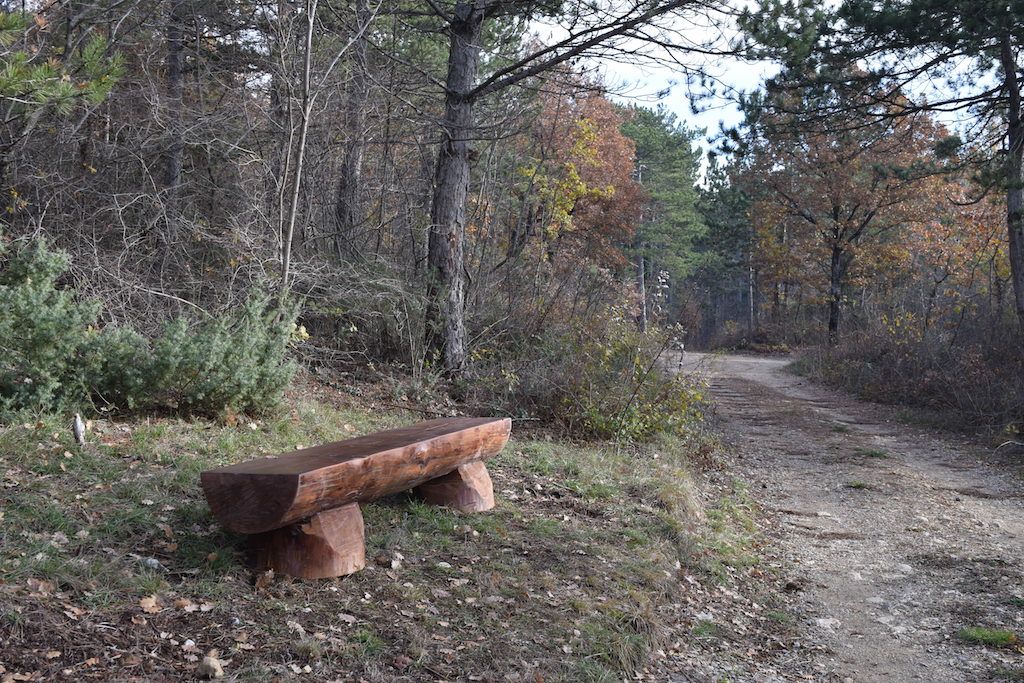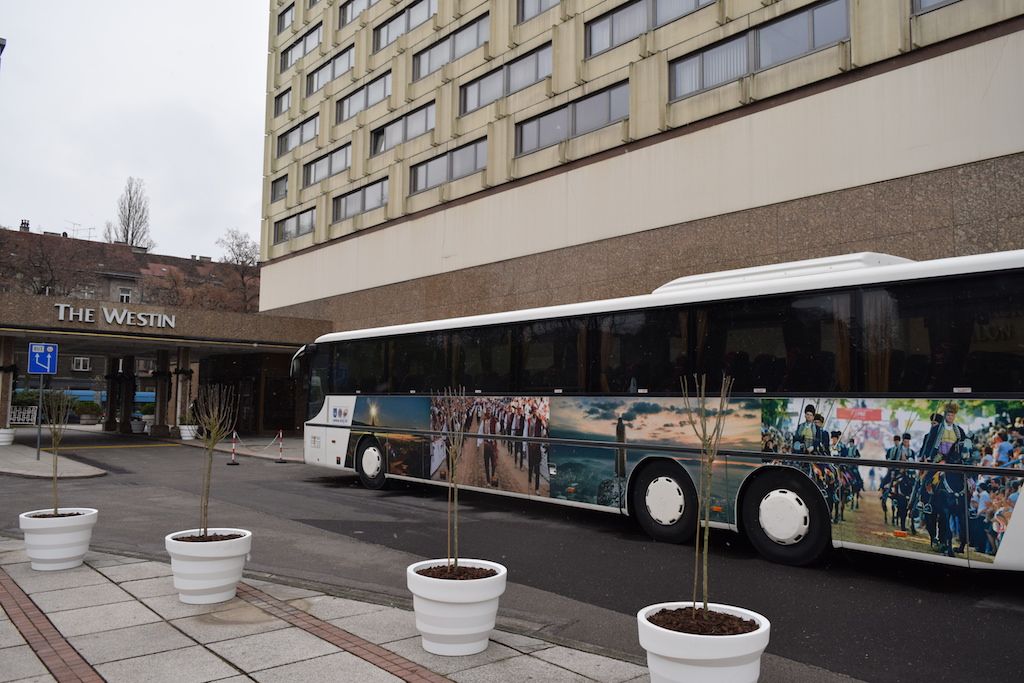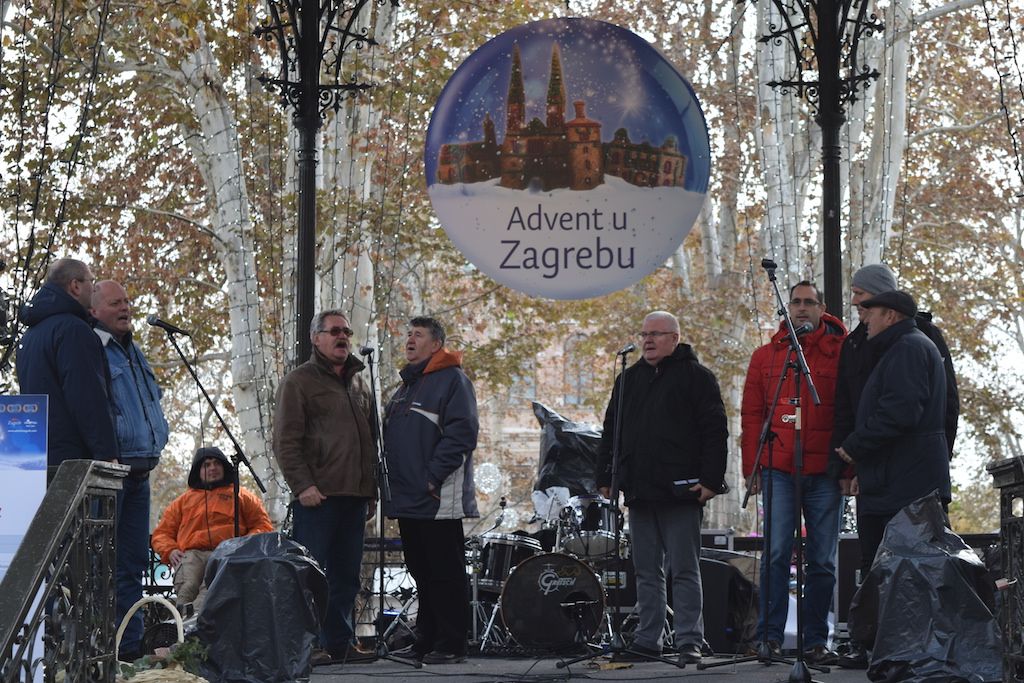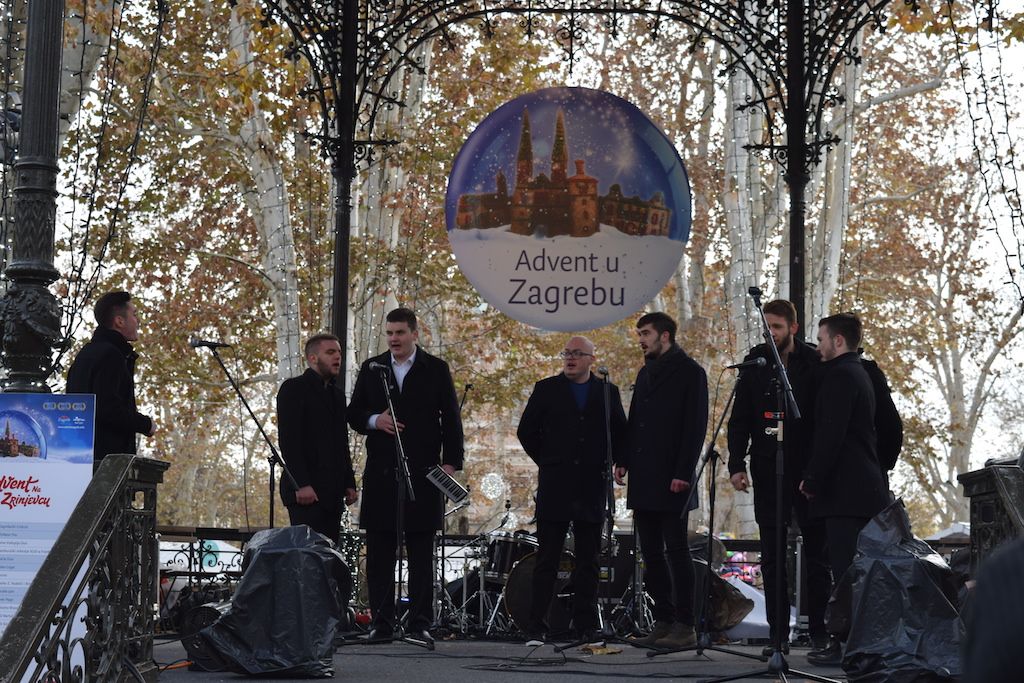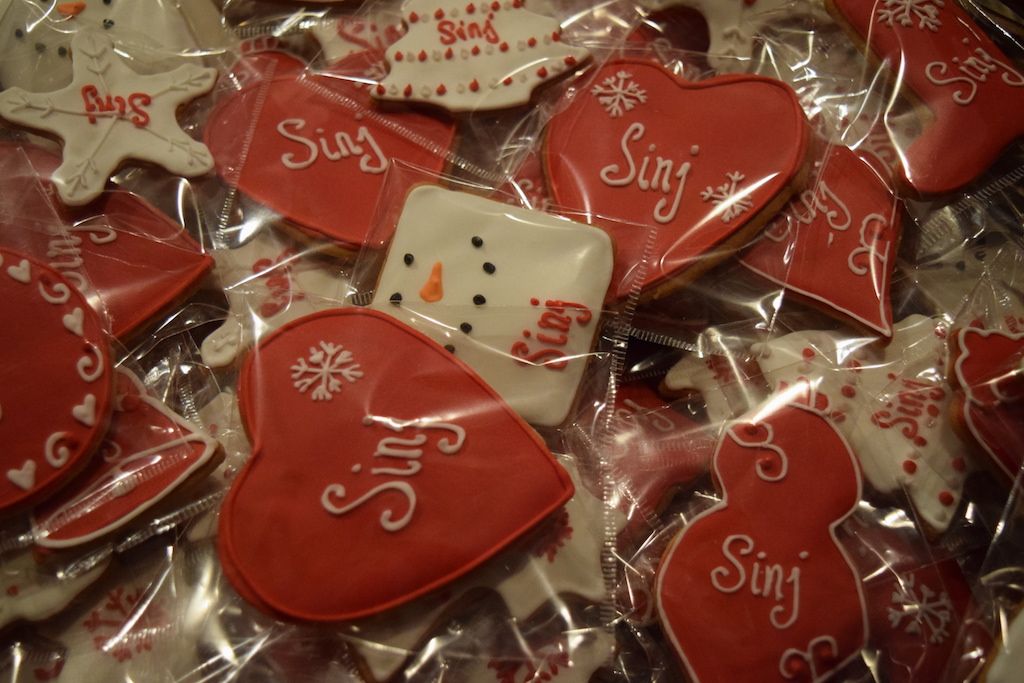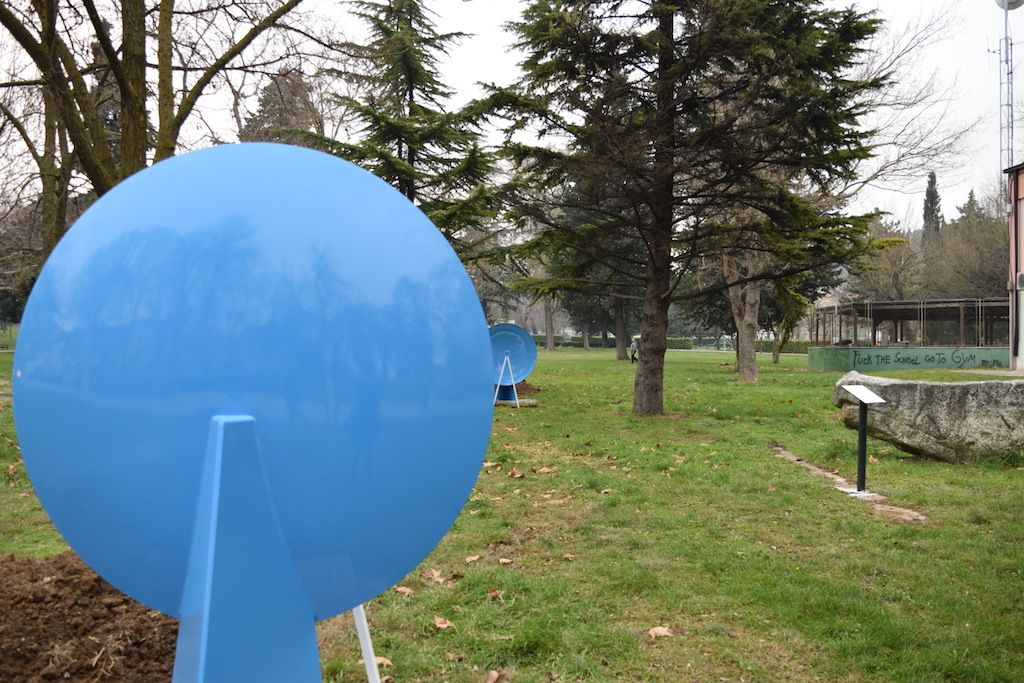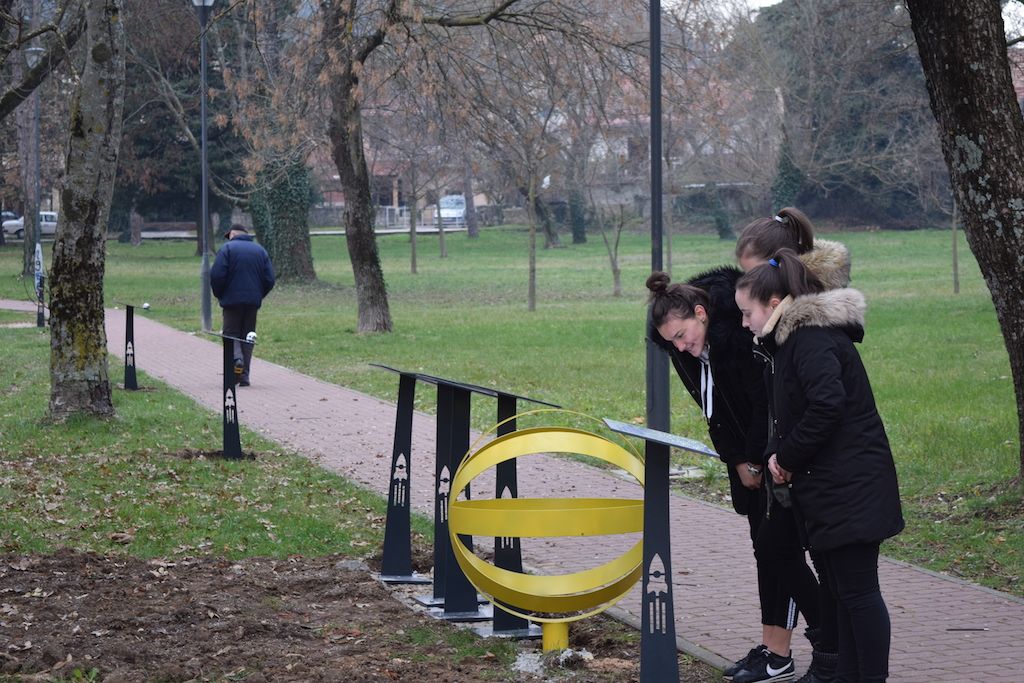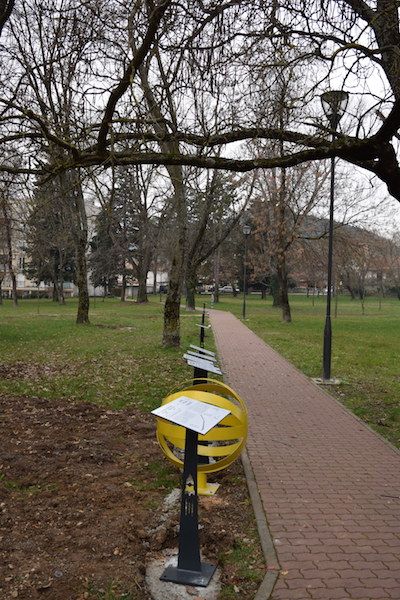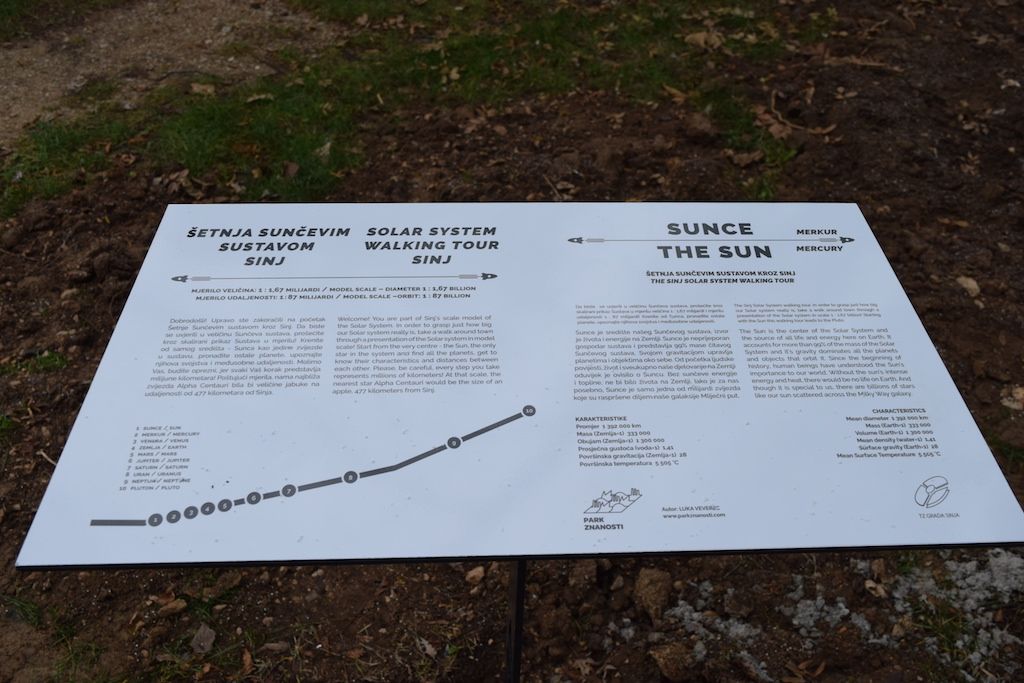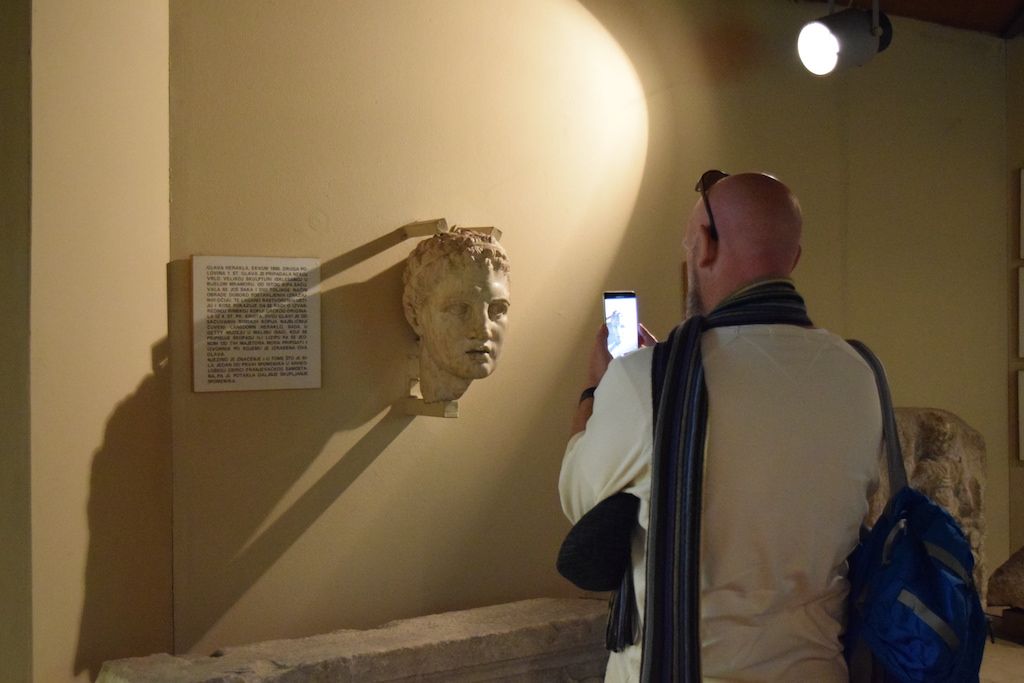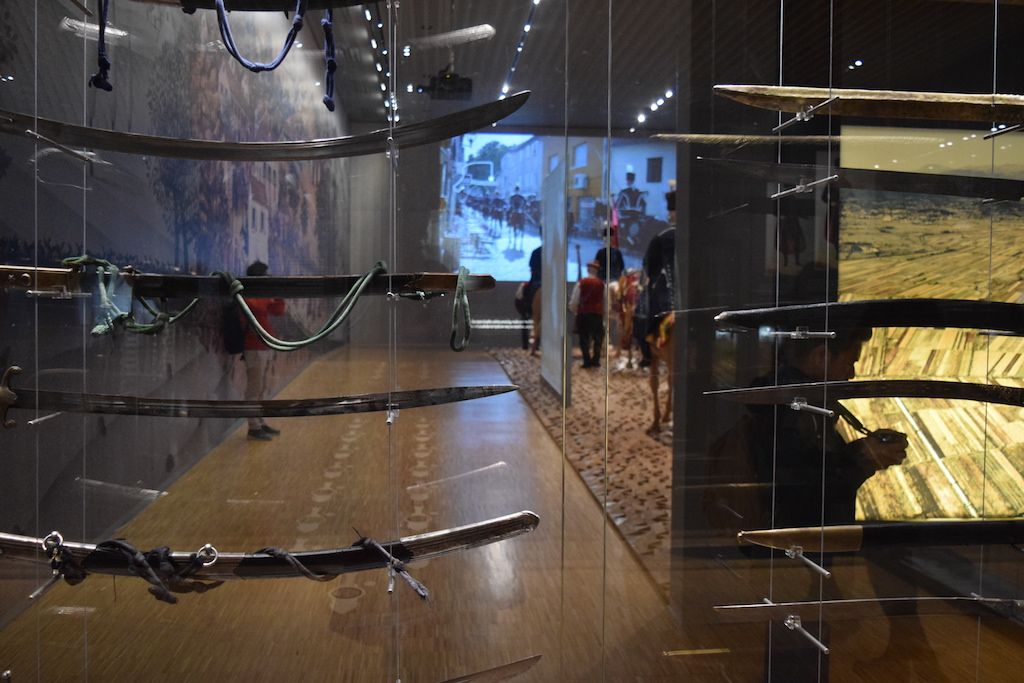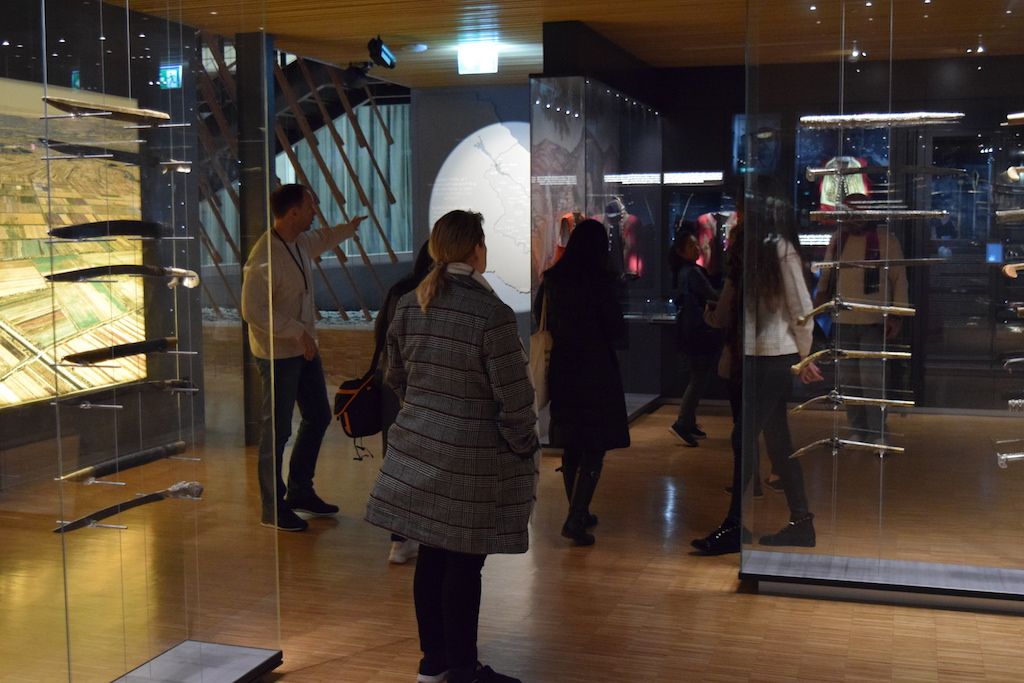Sinj Presents Vibrant New Year's Eve Program with Ozon and Vatra!
December 30, 2018 - The Sinj Tourist board is kissing goodbye the old year and welcoming the New Year at the Alojzije Stepinac Promenade in Sinj! A rich musical and entertainment program awaits with music groups Ozon and Vatra.
The start of an unforgettable day in Sinj starts at 11 am, when the New Year's Eve for children will be organized by the Association Sinjski ferali for all the youngest citizens and their guests.
The evening program in Sinj promises to bring top class music, as groups Ozon and the legendary Vatra will take the stage!
The Sinj Tourist Board looks forward to your arrival!
To read more about Inland Dalmatia, follow TCN's dedicated page.
Inland Dalmatia Becoming More Popular, Tourist Potential "Invaluable"
Under the slogan “Inland Dalmatia - unexplored beauty,” the Inland Dalmatia region was presented as the most successful destination of rural tourism in Croatia this year, in the presentation hall of the Sinjska Alka Museum on Thursday evening, reports Slobodna Dalmacija on December 20, 2018.
Inland Dalmatia, as a unique tourist destination, makes up the area that includes the towns of Sinj, Trilj, Imotski, Vrgorac and Vrlika and the municipalities of Dugopolje and Klis. Tourism workers from this area, together with Joško Stella, director of the Split-Dalmatia County Tourist Board, estimated that the tourist potential of the region was invaluable.
Tourism, as an economic branch in this area, has started with significant delay, but in the last ten years, a breakthrough has been made that leads to optimism. Joško Stella especially emphasized this about Inland Dalmatia.
“Inland Dalmatia occupies 70 percent of our county's area and has 2 percent of county tourism. In our county and county tourist board the tourist significance of Inland Dalmatia is recognized, and in that context, it helps. We have witnessed two major leaps lately.
The first is the Sinjska Alka Museum, which is world-class and whose time is still coming. The second step was made by the Imotski region, where today there are over 200 holiday houses with swimming pools. I think we are on the right track to continue and persist,” Stella said.
The presentation of Inland Dalmatia as the most successful destination of rural tourism was opened by Sinj mayor Kristina Križanac, who pointed out in detail that Sinj is the central part of Inland Dalmatia with two strong brands, the Sinj Alka and the Miraculous Lady of Sinj as the largest Virgin Mary shrine in the southern Croatian region. In addition to the “Alka” city, the whole Cetina region is rich in cultural, natural and traditional heritage and boasts many events.
Monika Vrgoč, the director of the Sinj Tourist Board, also spoke about Inland Dalmatia as a unique tourist destination. Vrgoč reminded that every segment of the destination, with its specific content, creates exactly what potential visitors want, only they need to discover it and come closer to it.
Tomislav Balić from Dugopolje spoke about the traffic and public tourist infrastructure. He recalled that the tourist infrastructure in the entire destination is rapidly developing, and EU grants are being used as well.
As part of the presentation, promotional films about the destination as a whole and about Sinj, Imotski, and Vrlika were shown. The program also saw performances by klapa "Vrilo”, folk customs from the Association for the preservation of the heritage of the Cetina regionj, the Sinj majorettes, and especially attractive were children in favorite folk costumes.
To read more about Inland Dalmatia, follow TCN's dedicated page.
Sinj Tourist Board Upgrades Pavića Nebesa Walkway
December 20, 2018 - The Tourist Board of Sinj, with the support of the Tourist Board of Split-Dalmatia County and the City of Sinj, and in cooperation with the Croatian forests and BIOM association, has upgraded and marked the Pavića Nebesa walkway.
Since the Pavića nebesa walkway is a favorite of locals, but also tourists, the Sinj Tourist Board decided to give it an upgrade, and implemented a bird watching area, sitting benches, bird houses, info tablets and signposts. These activities were carried out with the support of the Tourist Board of Split-Dalmatia County and in cooperation with the Croatian forests in Sinj, the Biom - Sinj association and the Sinj company Naprijed d.o.o.
Distinguished professor Velimir Borković once said about Pavića nebesa: "Pavića nebesa is a mountainous hill that crosses the northwest of Sinj. In hypermetric, it has 400 isohypses, and the peak reaches a modest 513 meters and is less than 200 meters higher than the center of Sinj. The mentioned isohypse mainly accompanies four local roads that run through the slopes of the Nebesa."
Nebesa has a complex petrographic structure in which carbonates (conglomerates and breccia) prevail, with layers of marl, clay and eruptive traces. The annual rainfall is around 1300 mm, and the complex petrographic structure under the surface keeps significant amounts of water and sparingly divides them into numerous bursts at the foot. According to the petrographic substrate and the sub-Mediterranean climate, there once was the native vegetation of oak groves (Quercus pubescens), flowering ash (Fraxinus ornus), hornbeam (Carpinus orientalis) and cade juniper (Juniperus oxycedrus), though it was degraded by the human footprint, and replaced predominantly by black pine (Pinus nigra), with rare ancestors - oak, ash and hornbeam.
Vineyards, orchards and gardens are planted on the slopes today. Currently, the most common shrubs of vegetation are blackberry (Rubus ulmifolis), Cornelian cherry (Cornus mas), dog rose (Rosa canina) and blackthorn (Prunus spinisa). Of the edible plants, there are still several types of fungus (Agaricus macrosporus, Agaricus campestris Cantharellus cibarius and Infundibulicybe geotropa), and of the healing medicinal plants, there is elder (Sambucus nigra), winter savory (Satureja montana), curry plant (Helichrysum italicum), grass (Teucrium montanum) and sage (Salvia officinalis).

The animal world is rich in species. You can still encounter the Northern White-Breasted Hedgehog (Erinaceus roumanicus), European hares (Lepus europaeus), red foxes (Vulpes vulpes), sometimes deer (Sus scrofa), and even wolves (Canis lupus).
If you look up, you will see the common wood pigeon (Columba palumbus), Eurasian golden orioles (Oriolus oriolus) or Eurasian woodcocks (Scolopax rusticola L.), the Eurasian scops owl, the Tawny owl, or the common blackbird.
The most intriguing insect is certainly the stag beetle (Lucanus cervus). Not all inhabitants of Nebesa are friendly, however, and it is better to avoid an encounter with the horned viper (Vipera ammodytes) which is still rare in Nebesa.
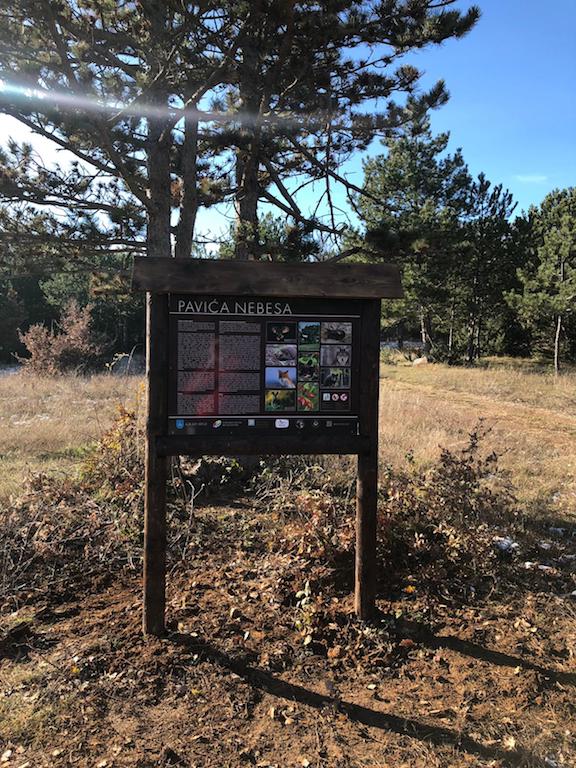
The Sinj Tourist Board hopes that the new paved path will serve as a natural attraction for tourists who visit the destination through the hiking, as well as birdwatching, by which the surrounding forests serve as a natural habitat.
Only half an hour from the city center, Pavića Nebesa could become a place for educating children about the importance of nature conservation.
Moreover, on the western part of the promenade towards the village of Lučane, there is the town of Šušanj where archaeologists and historians placed the site of the legendary Dalmatae fort Setovi. This was where the last battles of Dalmatae were waged with the Roman legions (34-33 BC) led by Octavian - later Roman Emperor Octavian Augustus.
To learn more about Inland Dalmatia, follow TCN's dedicated page.
Live Nativity Scene in Trilj this Christmas Eve!
December 18, 2018 - The Trilj Women's Association ‘Triljanke’, members of the Drama Association ‘Most’, and the locals of Trilj have traditionally organized a live nativity scene.
The scene will be staged in Trilj near the church of St. Mihovila on Christmas Eve, 24 December 2018 (Monday) starting at 17:00. The celebrations will continue with bakalar, mulled wine, and fritule.
Everyone is welcome to experience Christmas in this unique, Inland Dalmatian way!
To learn more about Inland Dalmatia, follow TCN's dedicated page.
Sinj Promoted During Advent in Zagreb!
December 16, 2018 - In Zagreb on December 15th, as part of the jubilee, 60th Sinj Nights and Advent in Zagreb, the town of Sinj presented part of its tradition at Zrinjevac park.
As part of the Sinj Nights and Advent in Zagreb, the City of Zagreb, City of Sinj, Sinj Kluba Zagreb and the Sinj Tourist Board, presented the Inland Dalmatian town at Zrinjevac park in Zagreb.
Many Zagreb citizens and their guests gathered in one of the most beautiful and famous Zagreb parks to enjoy the songs of the highly rewarded Sinj klapa, as well as the student band Banderija.
Following them was the performance of the Sinj majorettes, who delighted the crowd with their choreography. For this occasion, all present guests were gifted gingerbread by Christina Križanac, the mayor of Sinj, and Monika Vrgoč, the director of the Sinj Tourist Board. The sweet treats were prepared by Ankica Župić.
The celebration of Sinj Nights in Zagreb was an excellent way of promoting the vibrant tradition and customs of the city of Sinj and the Cetina region, as well as exchanging knowledge and opportunities to enrich the tourist offer.
Sinj Tourist Board Completes Tourism Projects On Sounds and Science
December 15, 2018 - The Tourist Board of Sinj, with the support of the Croatian Tourist Board, has successfully implemented two projects: "Sound Mirrors - Science Park” and "Space Walk".
Namely, during the past few years, the Tourist Board of Sinj received grants from the Croatian National Tourist Board for co-financing various programs to improve the tourist infrastructure and destination, and this year it was awarded to them for the implementation of these specific projects.
The ultimate goal is to bring the tourist offer closer to all those who are sensitive to music and science.
The Sinj “Space Walk” is conceived as a concept and structure where the exhibition provides users with a walk through a reduced, scaled view of the Solar System. The planned exhibit consists of a spatial view of the Sun and nine planets of the system on designed info columns with descriptive plates and the author’s explanation of the idea of the exhibit. The "Space Walk" route was set up in the city park, thus giving it an educational character due to the vicinity of the high schools of Sinj.
The Science Park project came to fruition last year with the implementation of the Music Fence at the Alojzije Stepinac Promenade, and this year the Sound Mirror exhibit near the Youth House. The sound mirrors allow visitors to chat at a distance of 20 meters! They also inspire visitors to learn about sound physics, the transmission of sound waves, and stimulate the sensory perception of elders and those with special needs.
These unique educational and entertaining exhibits are designed to provide all users, especially the youngest, the challenge, enjoyment, fun and learning through games, thus stimulating creativity and self-development. With an interesting interactive presentation of science within the games and research of exhibits, scientific knowledge is easily adopted and becomes part of the general education of users. Therefore, the purpose of these projects is to educate, stimulate the senses of people of all ages, as well as those with special needs, and promote the identity and the tourist offer of the city of Sinj.
To read more about Sinj, follow TCN's page.
6th Christmas Fair in Trilj this Weekend!
The Trilj Tourist Board invites everyone to the 6th Christmas Fair, to be held on December 16, 2018, from 11:00 am in the atrium of the "Trilj" school.
From a variety of Christmas decorations and handicrafts, honey and jewelry products, and traditional delicacies, visitors will surely find Christmas gift ideas for their loved ones, thus supporting the work and effort of all exhibitors.
For all the visitors, in the good spirit of Christmas, the Trilj Tourist Board has prepared sweet delicacies of the Trilj region including a glass of mulled wine, while Christmas songs and customs will be led by the parish choir "Sv. Mihovil" Trilj and Society "Košute” - and it wouldn’t be a good party without the entertaining Trilj Majorettes!
As a special part of this event, at 12:00, Santa Claus will greet the youngest, who will also enjoy a surprise program.
As part of the 6th Christmas Fair, the students, parents, and teachers of the “Trilj" school have organized a fashion show starting at 16:00 under the title "Advent on the Bridge”, where the students of the Trilj school and PŠ "Velić" and will present their Christmas creations - and best yet, every mother will wear dresses to liven up the Advent spirit!
Intangible Heritage of Croatia – Cheesecloth Cheese – Sir iz Mišine
December the 7th, 2018 - The intangible heritage of Croatia is complex and varied, so let us take a look at yet another one, which involves cheese. The preparation of cheesecloth cheese, locally called sir iz mišine, is a long tradition in Dalmatian inland, Dinara, Velebit, Lika, and the western Herzegovina area.
When the initial production of this piece of intangible heritage of Croatia first began isn't known, but even the ancient Illyrians prepared this type of sheep cheese. One of the theories says that production began when milk stored in sheep paunches accidentally started the fermentation process. This kind of milk had whey and cheese, which during that time, became a tradition to make.
.jpg)
The way of making the cheese hasn’t changed much from the beginning. Back then, the cheese was made from whole sheep milk but today it's done with skimmed sheep, goat, or cow milk too. It is preserved in sheep or goat paunches which gives it its typical smell and spicy flavour. It is usually produced during summer from extra sheep milk and it can be consumed from autumn onwards.
In order to make this cheese, one should follow several procedures. First, the paunch should be appropriately prepared, then the milking should be done and milk preparation should follow right after it. The whey should be prepared too. Making and preparing the sheep or goat paunch is important as it ensures good cheese making. The paunch should be properly washed, disinfected and dried from 15 to 30 days.
Knowledge and skill with regard to this craft is traditionally inherited from generation to generation. When everything is ready, the brewing process can start and the product can be stored in the paunches. Finally, the stored cheese needs to age, and then it is ready.
.jpg)
The brewing begins right after the milking and the brewing time depends on the temperature (ranges from 31-35°C to 35-40°C) and the strength of the whey. When the mixture forms a certain structure, the first layer is turned over to even up the temperature of the whole batch, then, it is cut into cubes and should rest until the whey turns into a greenish – yellow colour.
This cheese mass is then put in cloths and subsequently pressed.
After pressing the cheese, salt is added until there is enough cheese to be put into the paunch. If the paunch is filled with cheese one-time only, this ensures better quality. When the paunch is filled, the cheese is shredded and then crumbled. It is important to remove all the air from the paunch to ensure that it matures in controlled conditions (12-15°C). It takes 2-3 months to achieve its specific characteristics and to be ready for consumption.
.jpg)
To produce one kilogram of cheese, you'd need 7-8 litres of skimmed milk or 7-9 litres of fresh sheep or mixed sheep/cow milk. To produce 12 to 15 kg of cheese and 7-8 litres of slurry, you would need 100 litres of whole sheep's milk. The mature cheese is then taken out of the paunch and stored in low temperatures with the appropriate humidity and level of hygiene.
.jpg)
The area where this cheese is made is usually agricultural regions where you can find livestock like sheep, lambs, and goats. To keep this tradition going and in order to continue this type of cheese production, it is important to help to preserve small family businesses and agricultural estates which are involved in making it.
Nowadays, there are some differences in production as the sheep and milk used are different from the traditional type. In addition, technology is used to produce the cheese which makes it higher quality in the modern day.
Despite technology's influence, it is important to preserve most of the traditional ways of making the cheese active by passing down knowledge of this tradition. The final product is often a very rare find on markets and in stores but it can be found on agricultural estates and villages where they still make it.
.jpg)
Make sure to follow our lifestyle page for more information on the intangible heritage of Croatia and much more.
Respected International Journalists Visit Sinj!
December 5, 2018 - On Wednesday, December 5th, as part of the permanent tourist promotion, the Croatian National Tourist Board and the Split-Dalmatia County Tourist Board, in cooperation with Turkish Airlines and the Tourist Board of Sinj, welcomed the arrival of eight prominent internationals journalists in Sinj.
Journalists Dixon Carole Leigh, Shi Crystal Han, Pollock Elizabeth Ann, Hiromi Suzuki, Ryoichi Sato, Dominick Siddle, Khairul Izwan Bin Nan, and Low Siew arrived from the United States, Canada, Japan and Malaysia. In this study trip, they first visited Zagreb, then Zadar, Trogir, Split, NP Krka and Sinj.
The theme of their study trip is devoted to this year's Advent and the vibrant tourist offer of Croatia, the selective forms of tourism - including cultural, natural and gastronomy - as well as the opportunities available for active vacations.
The tour of Sinj began at King Tomislav Square, where they were welcomed by the director of the Sinj Tourist Board, Monika Vrgoč. There they met the rich past of the town of Sinj, and in particular, the Shrine of the Miraculous Lady of Sinj and the Alka. They visited the church of the Miraculous Lady of Sinj and the Archaeological Collection of the Franciscan Monastery accompanied by the leader, Fr. Mirko Marić. This was followed by a tour of the city and a visit to the Sinj Alka Museum accompanied by the curator of Tomislav Barhanović. The journalists did not spare words of praise.
As the entire program is largely dedicated to gastronomy, the journalists received a traditional gastronomic offer and the recipes of the most famous dishes of the region such as uštipak, Sinj arambaša, and roast veal "under the bell”. The reporters were delighted and surprised by the offer of Sinj, showing an extraordinary interest in continuing to cooperate through selective programs for cultural tourism and traditional eno-gastronomic offer.
Christmas Fair Returns to Trilj this Month!
December 3, 2018 - The Trilj Tourist Board invites you to the 6th Christmas Fair to be held on December 16, 2018, from 11:00 am in the atrium of the elementary school "Trilj".
Including a variety of Christmas decorations and handicrafts, honey and honey products, visitors will surely find Christmas gifts for their loved ones, and thus support the work and effort of all exhibitors.
In the good spirit of Christmas, the Trilj Tourist Board will prepare the sweetest delicacies of the Trilj region with a glass of mulled wine for all visitors to enjoy, while the Pučki pivači of the parish choir "Sv. Mihovil" Trilj and Society ”Košute" will lead the Christmas songs and customs.
As a special part of this event, the youngest visitors will be able to welcome Santa Claus and enjoy a surprise program! The event will begin at noon.
As part of the 6th Christmas Fair, all visitors will be able to enjoy a fashion show starting at 16:00 titled "ADVENT ON THE BRIDGE,” directed by the students, parents, and teachers of the elementary school "Trilj" who will present their Christmas creations. The entertainment part of the program will even include the Trilj Majorettes!
The Trilj Tourist Board invites all legal and natural persons who are registered to sell goods and have an assortment of Christmas items (decorations, candles, advent arrangements, greeting cards, etc.) to apply to present and sell their products, works, and services. Participation is free, and exhibitors must bring their stalls. The number of exhibitors is limited.
All applications must be received at the Tourist Office (Kralja Tomislava 1a), at 021 / 832-510 or by e-mail This email address is being protected from spambots. You need JavaScript enabled to view it., by 14 December 2018.
The Trilj Women's Association and members of the Drama Association "Most," with the locals of the town, will also traditionally organize a live Nativity scene.
All interested parties who wish to be part of the 10th anniversary must apply by December 16, 2018, to elementary school Trilj teachers (Ana Ć. Mirjana D., Nada L, Zdenka S., and Milan S.) or Mrs. Lukić at DV Trilj. To learn more about Trilj and Inland Dalmatia, follow TCN's dedicated page here.


